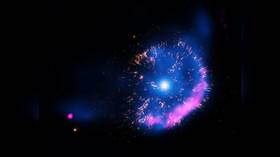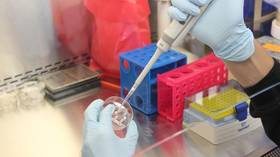Part-matter, part-light: Newly discovered ‘hybrid particles’ open doors to exciting new tech

Scientists have managed to create ‘hybrid’ particles from photons and atoms, crafting light that behaves like matter. The breakthrough could lead to revolutionary new inventions such as “unhackable” quantum communications.
Physicists at the University of Chicago created these “hybrid particles” by making “photons behave more like the particles that make up matter,” Science Alert reports. In a complicated process, the researchers learned how to change a particle’s “fingerprint” by altering its electrons with lasers. This changes the way that the particles behave at a molecular level.
"In order to make photons collide with one another, we use atoms as a go-between," said lead researcher Logan Clark.
#Photons can't interact with each other. Well, we can create #Floquet#polaritons", quasi-particles which are part-light and part-atom and interact with each others.They could be used for optical frequency conversion, to secure #quantum communication.https://t.co/OdIqnV3XJ6
— Fabrice Angelini (@FabriceAngelini) July 5, 2019
Known in scientific terminology as “polaritons,” these hybrid particles have been described as a sort of “magic dust.” They have the qualities of both atomic and light particles, which allows them to move quickly through space.
The new particles hold forth the prospect of exciting new technologies and great strides in advancing existing ones. For instance, computer speed could be increased significantly while “secure quantum communication methods” could lead to a revolution in encryption.
Also on rt.com Scientists reveal first ever IMAGE of black hole (PHOTOS, VIDEOS)“Our next order of business, though, will be to use these colliding photons to make topological 'fluids' of light,” said Clark. “It is a tremendously exciting time.”
The researchers have been working on polaritons for years. The findings were published in the July 3 issue of Nature, a British peer reviewed academic journal founded in 1869.
Like this story? Share it with a friend!














